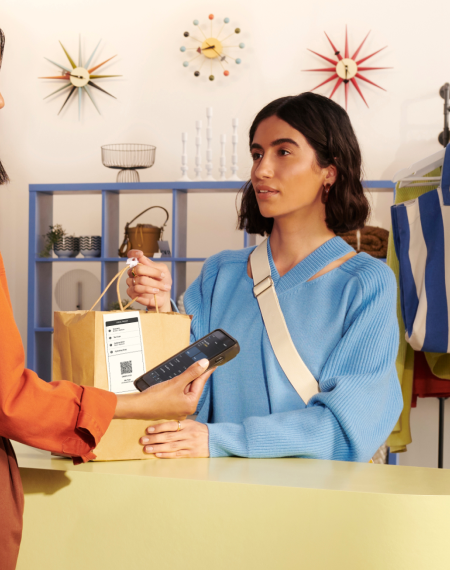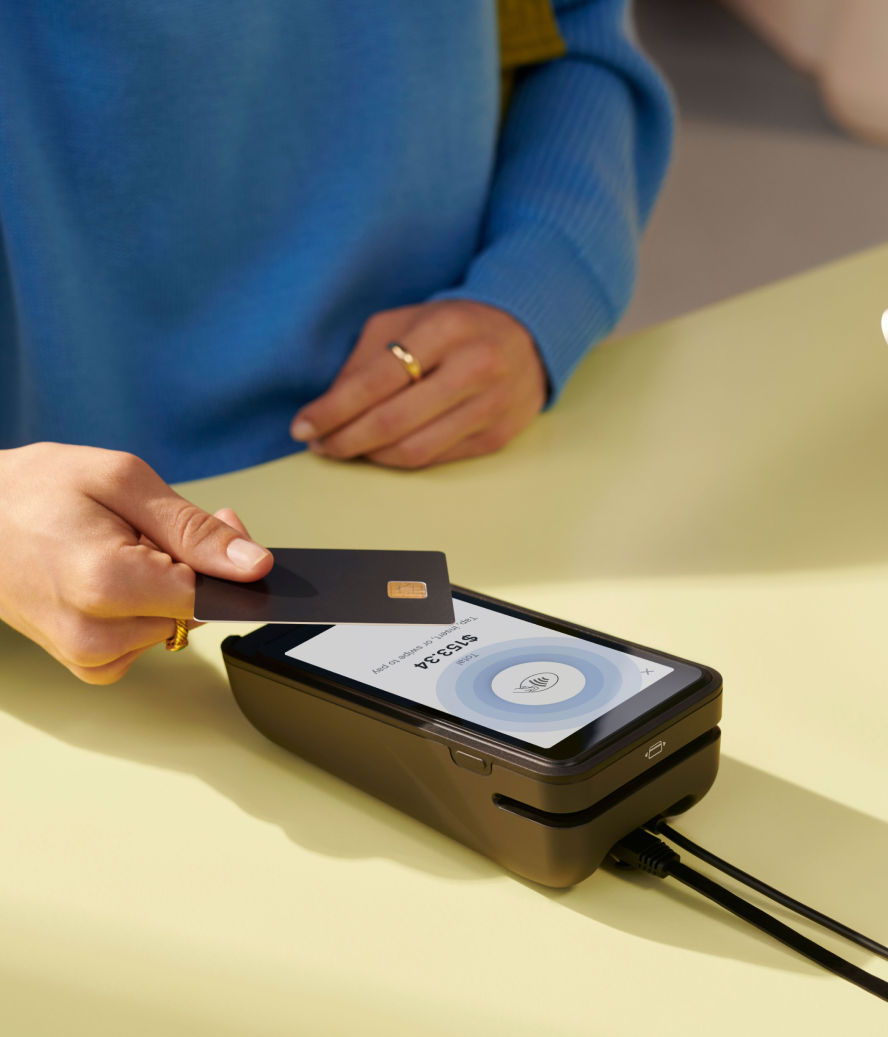For the modern retailer, your retail tech stack is key to your success. This strategic collection of software tools facilitates efficiency, data analysis, customer engagement, and inventory management, ultimately driving a seamless omnichannel experience for your customers.
Your toolstack is a crucial investment to stay agile and competitive in today’s digital era. But with so many options available, it can be difficult to decipher which retail tools will benefit your business—and which will become a hindrance in the long term.
This guide shares what a retail tech stack is, its essential components, and the best ways to ensure seamless integration across the stack to provide the best shopping experience for your customers.
What is a retail tech stack?
A retail tech stack is the combination of software tools that retail businesses use to perform day-to-day operations, streamline processes, provide better customer experiences, and gather insights and analytics.
A typical retail tech stack includes various components to manage different aspects of operations:
- An effective ecommerce platform that ensures your online store is user-friendly, secure, and capable of handling your product catalog.
- A point-of-sale (POS) system for smooth and secure transactions.
- A robust inventory management system to track and manage inventory levels and automate reordering processes.
9 essential components for your retail tech stack
When considering different types of technology, imagine them as key components of your business engine. Evaluate the ability of the tools you choose to optimize your operations, inject efficiency into your business, increase your capacity to expand, and enhance customer value.
1. Ecommerce platform
In a retail environment that combines brick-and-mortar operations with ecommerce offerings, an ecommerce platform forms the bedrock of your digital sales strategy.
This platform offers a robust and user-friendly interface, facilitating the online display and sale of your products, seamless and secure payment processing, and efficient management of customer interactions. It includes elements such as product catalogs, shopping carts, secure payment systems, and order management features.
When selecting an ecommerce platform, consider ease of use, customization capabilities, and security features. Ensure the platform is scalable to accommodate what will—hopefully—be a huge amount of future growth.
Shopify, for example, is a reliable ecommerce platform for retailers seeking a user-friendly interface, coupled with powerful customization capabilities and scalability. Its robust security measures safeguard your business and customer data with PCI-compliant payment processing, SOC 2 Type II and SOC 3 certifications, and transparent privacy controls.
Other security features include multi-factor authentication (MFA), granular staff permissions to prevent unauthorized access, fraud-busting algorithms and real-time stock tracking to tackle fraud, data breaches, inventory issues, and other common threats.
2. Customer relationship management (CRM) system
A customer relationship management (CRM) system helps retailers track customer interactions, preferences, and purchase history. Analyzing this data gives you the necessary information to create automated, personalized marketing campaigns targeting specific customer segments.
When choosing a CRM, consider its ability to provide a comprehensive view of your customers, relevant insights that guide you toward taking particular actions, automation capabilities for routine tasks, and analysis features for deriving customer insights and making personalized recommendations.
3. Order management system
An order management system (OMS) unifies sales you’ve made across multiple channels, such as online stores, brick-and-mortar stores, and marketplaces. The system can route these orders to different fulfillment centers. For example, you might route orders from online customers to their nearest retail store to reduce fulfillment and shipping costs.
Look for a tool that provides real-time visibility into order status, supports multiple shipping options, and integrates with your other retail solutions. Opt for new systems designed for scalability to accommodate an increasing volume of orders.
4. Inventory management software
Inventory management tools serve as the control center of your product flow, helping maintain optimal stock levels, streamline warehouse operations, accelerate order processing, and prevent overselling and stockouts.
Consider inventory management tools that provide real-time inventory updates, integrate with your order management system, and allow for automated reordering. For example, the Stocky app for Shopify offers efficient inventory management features like demand forecasting and supplier management, all from your Shopify admin.
5. Analytics and reporting tools
Analytics and reporting software help you understand your sales performance, customer behavior, and marketing effectiveness with metrics like order volume, fulfillment time, and customer satisfaction. This data can help you to make better business decisions, monitor performance, and identify bottlenecks.
When choosing analytics and reporting tools, key considerations include the ability to collect data from your other systems, the comprehensiveness of data offered, and the level of clarity in the insights displayed. Shopify Analytics, for example, unifies data you’ve collected across multiple sales channels for complete reporting visibility.
6. Point-of-sale (POS) system
A point-of-sale (POS) system processes transactions, manages inventory, and tracks sales data in real time. Modern POS systems offer advanced capabilities for inventory management, customer behavior tracking, and sales trend analysis—essential tools for making informed business decisions.
However, when POS and ecommerce solutions come from different providers, retailers often face delayed data synchronization and spend valuable time manually reconciling sales, inventory, and customer data across systems.
Shopify POS eliminates these challenges through its unified commerce architecture. As the only Commerce Operating System with natively unified ecommerce and POS solutions, Shopify provides a single platform for all retail operations. This means inventory management, order fulfillment, and payment processing all work seamlessly together, without the need for complex integrations or middleware.
7. Employee scheduling software
Retail employee scheduling is more than just filling shifts—it’s about optimizing labor costs, improving customer service, and keeping staff engaged. The challenge? Balancing staff availability with peak foot traffic, labor budgets, and compliance requirements. The last thing you want is to overspend on labor on slow days and be short-staffed on busy days.
Workforce management tools can analyze foot traffic, sales trends, and employee productivity to recommend the ideal staffing levels for peak hours. Shopify POS apps like EasyTeam and Sling eliminate the hassles of handwritten schedules and countless spreadsheets, making employee scheduling effortless.
You can also create schedules, track staff availability, manage time tracking, check for scheduling conflicts, forecast labor costs, and even offer commission incentives from a single dashboard.
8. Customer feedback and reviews
Every bit of feedback from your customers is an opportunity for you to refine your offerings, build credibility, drive business growth, and retain sales.
Customer feedback and review tools, like Yotpo, Reputon, and POWR seamlessly integrate with your Shopify store so you can automatically capture feedback, identify recurring themes, and address issues—like stockouts or products that are different than they appear online.
If customers complain about stockouts, for example, set up an automation to anticipate lack of inventory and handle it when it happens. Use Shopify apps like Back in Stock and Notify Me! to send them email and SMS notifications. That way, customers can order directly from your store when their favorite products become available again—and you don’t lose the sale entirely.
9. Marketing automation tools
Instead of manually tracking every customer action and marketing to them accordingly, you can set up workflows that trigger targeted outreach. For example, you can use a welcome email with a discount code when someone signs up for a newsletter or a cart reminder for shoppers who abandon checkout.
These automations run in the background, nurturing leads and driving sales without adding to a retailer’s to-do list. Plus, they’re flexible—merchants can tweak campaigns mid-run to improve results, ensuring every interaction feels relevant and well-timed.
Options include:
- Launchpad to schedule adjustments to your website in advance
- Shopify Flow to create workflows that trigger targeted messages
- Shopify Email to craft, customize, and schedule email marketing campaigns
- Shopify’s segmentation tools to divide your audience into groups of shared interests, qualities, or behaviors
Fabric and handcrafted goods retailer iTokri, for example, used Launchpad to personalize its checkout experience with options like gift-wrapping and multi-location shipping. These improvements led to a 42% increase in return customer rate, a 91% boost in international sales, and stronger customer engagement, enabling the brand to achieve its goals.
“We have always believed in Shopify to run our business,” says Nitin Pamnani, co-founder of iTokri. “We are not a technology business, so being able to automate processes, add features, and expand operations without technical complexity has been fundamental to our success.”
How to choose the right components for your retail tech stack
- Evaluate your specific business needs and goals
- Analyze your existing technologies and pain points
- Consider the importance of integration
- Research and evaluate different solutions
- Seek input from relevant stakeholders
When choosing your tech stack components, consider your current needs and what your business may require moving forward.
1. Evaluate your specific business needs and goals
Establishing clear goals for your business is the first step in selecting the right tech stack components. This ensures that every part of your tech stack serves a specific purpose, preventing you from investing in unnecessary tools and helping you anticipate future needs as you scale.
For instance, if your goal is to provide exceptional customer service, your choice of CRM system becomes crucial for enabling personalized interactions, timely responses, and proactive service based on individual customer behaviors and preferences. If you plan to expand your product range significantly, you need a scalable inventory management system to accommodate increased traffic, sales volume, and data storage.
2. Analyze your existing technologies and pain points
Review your current technology stack and identify gaps or areas for improvement. Are there outdated components that no longer serve your business needs? Are there manual tasks that could be automated? Do you need help with inventory management or order fulfillment? Answering these questions can help determine which components you need to add or replace.
3. Consider the importance of integration
Interoperability—the ability of different systems to communicate and work together—is a crucial factor in the effectiveness of your retail tech stack.
While unified commerce provides the foundation by natively connecting your core retail operations, most businesses need additional specialized tools. This is where strategic integration becomes crucial for your tech stack's effectiveness.
Connecting specialized POS integrations helps you tackle specific business needs—whether that's advanced customer relationship management, complex logistics, or industry-specific requirements—without disrupting your core operations.
Here are some tips to ensure successful integration with your tech stack:
- Start with a unified commerce foundation. Shopify provides a single platform for your core retail operations. From there, you can choose from 8,000+ third-party apps in the Shopify App Store to customize your solution without compromising unified commerce benefits.
- Look for tools with robust APIs. Application programming interfaces (APIs) enable specialized tools to communicate effectively with your commerce platform. Strong API support ensures reliable data exchange and real-time updates between your additional tools and your unified commerce foundation.
- Seek professional advice. Integration of specialized tools sometimes requires technical expertise. Consider working with IT professionals who understand both system integration and unified commerce principles to maximize your technology investments.
4. Research and evaluate different solutions
Not all tools are created equal—each has particular features, benefits, and drawbacks. Research extensively by reading reviews, case studies, and customer testimonials. Look for components with a proven track record of success in the retail industry.
Choose competitively priced tools, but be cautious of the cheapest options. Opting for inexpensive technology may seem cost-effective initially, but it often leads to costly upgrades and retrofitting in the future, making it a more expensive choice in the long run. By avoiding them, you can ensure quality and reliability and maximize functionality and features—and you’ll gain access to regular software updates and customer support, enhancing your business operations.
5. Seek input from relevant stakeholders
Seek input from relevant stakeholders to ensure your retail tech stack meets the needs of your business as a whole and promotes effective adoption and use. For instance, your retail sales team may provide valuable insights into what features they’d like in a CRM system. At the same time, your inventory manager may have specific requirements for an inventory management system.
Unify your retail tech stack with Shopify
Assembling your toolstack isn’t just about finding tools to plug the gaps of your current setup. Technology must work together for it to become effective. When systems aren't properly unified, technical debt and fragmented data can create costly inefficiencies that impact your entire operation.
As the only Commerce Operating System with natively unified ecommerce and POS solutions, Shopify provides a single platform for all your core retail operations. Whether data comes from Shopify's native features or third-party apps, everything flows through one system, eliminating the need for complex integrations or middleware.
Retail tech stacks FAQ
Can I customize my retail tech stack?
Every retail business is unique, with its own needs, goals, and challenges. You can tailor your tech stack to meet your specific requirements.
How can a retail tech stack improve the customer experience?
A unified retail tech stack improves the customer experience by bringing your most important data into a single platform. For example, unified customer profiles in Shopify merge the data you’ve collected on your customer, both online and offline. Retailers can reference these profiles to personalize the shopping experience.
What role does data analytics play in a retail tech stack?
Data analytics helps you understand your sales performance, customer behavior, and the effectiveness of your marketing efforts. For example, data analytics can reveal the most popular products, helping you manage inventory more effectively.
What technologies are used in retail?
Retail businesses use various technologies to streamline operations and improve customer experiences, including:
- Ecommerce platforms
- Point-of-sale (POS) solutions
- Customer relationship management (CRM) systems
- Order management systems
- Inventory management software
- Analytics and reporting tools
- Employee scheduling software
- Customer feedback and review tools
- Marketing automation tools





